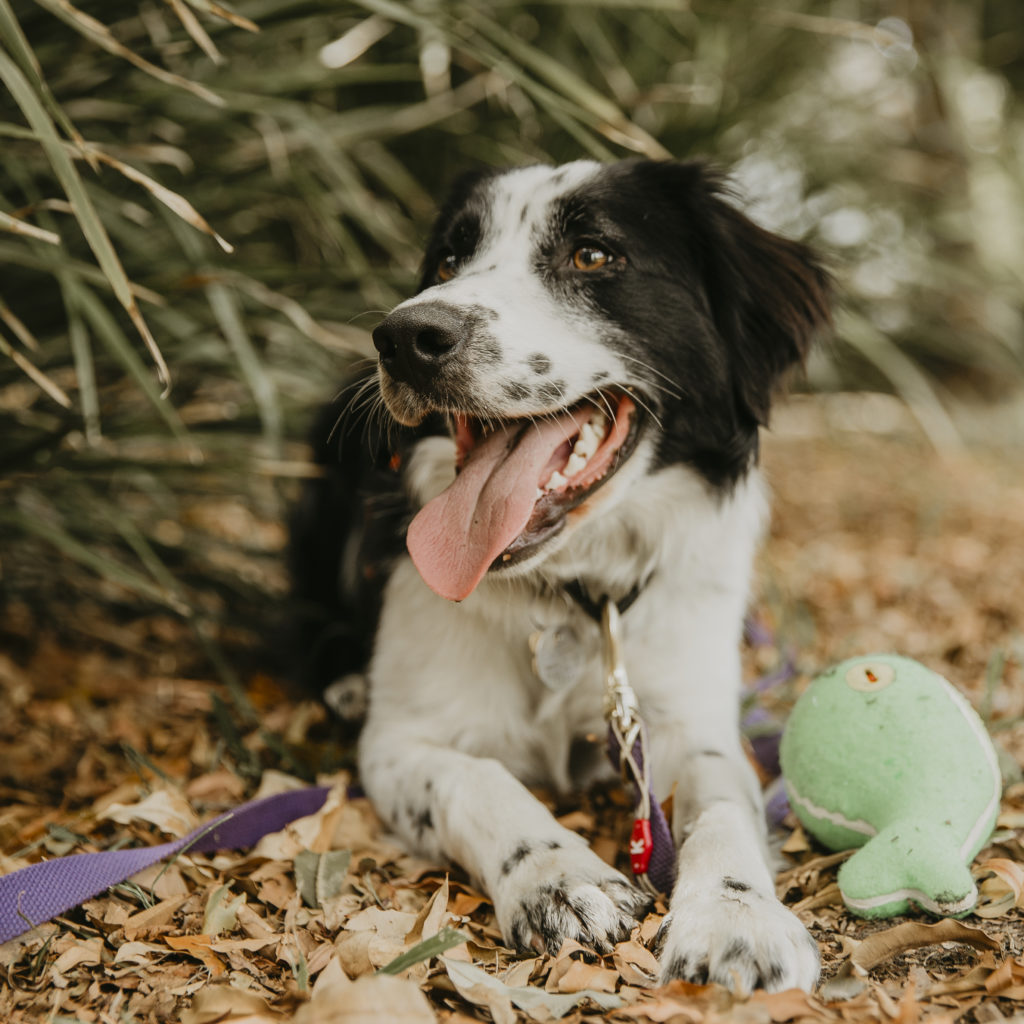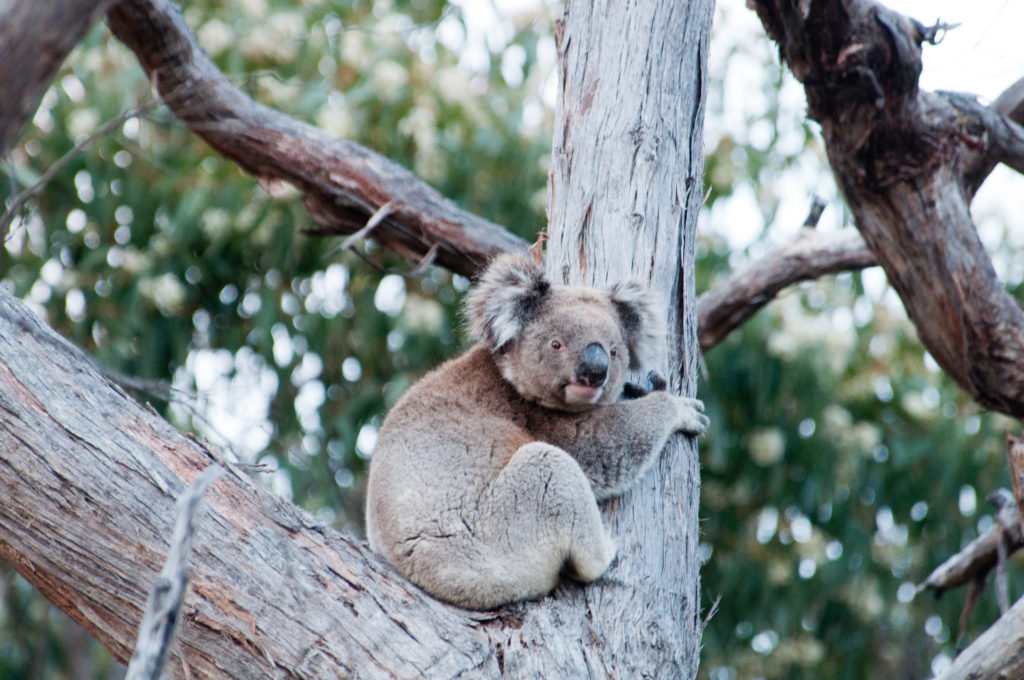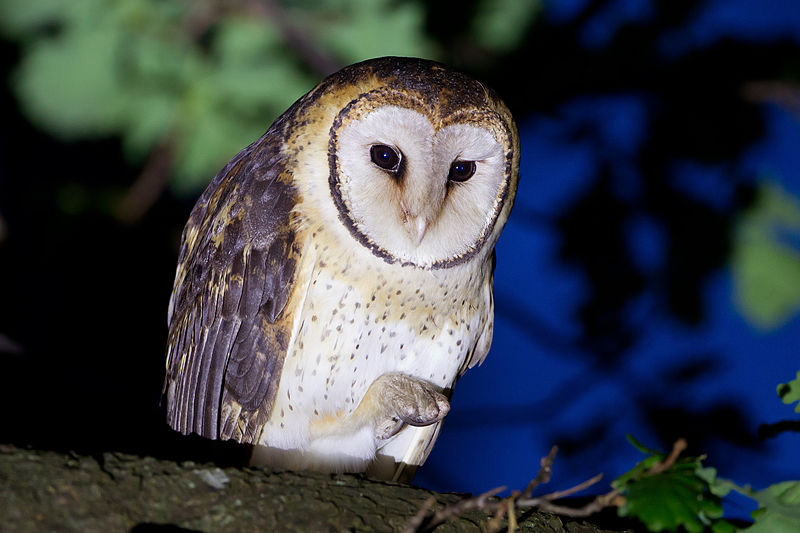
Zorro is working like a dog to help scientists find the vomit of elusive masked owls in Tasmania. Image: University of the Sunshine Coast.
Owl vomit. Quoll scats. Possum poo. It’s a strange kind of treasure hunt, but that’s exactly what detection dogs are now being trained to find. The Atlas of Living Australia is supporting the University of the Sunshine Coast’s (USC) program of training research dogs for conservation. And it turns out the keen-nosed canines are doing a doggone good job.
Teaching a detection dog new tricks
Detection dogs are normally used by the army to find explosives. They work with the police to detect drugs and weapons. They help search and rescue teams to find people who are lost or in distress. But detection dogs are now also used by research scientists to track elusive species in the wild.
Dr Romane Cristescu, an ecologist at the USC, runs the Research Dogs for Conservation program with Dr Celine Frere. She says the detection dogs are having great success in the search for endangered species.
“Detection dogs are used in conservation work to track rare animals, detect pest species and locate threatened native plants. They’re much more accurate than humans and they’re more efficient,” Romane said.
“Dogs can smell what we can’t see”
With a team of five detection dogs, Detection Dogs for Conservation is helping to protect Australia’s biodiversity. Each dog is trained to detect a specific species (or species by-product) using the same reward techniques used to train police and army sniffer dogs.
Romane and her colleagues are frequent visitors to the ALA website, and see it as an essential tool for their research.
“The ALA is a crucial resource for the conservation programs we run. We use ALA data to design our koala surveys all the time – to look up recent sighting information and determine which area to search. Depending on our survey goals, we use ALA data differently. For instance, we go to areas of recent sightings if we want to find fresh scats to determine koala genetics, or we go to areas with only old records when we are interested in whether koalas persist in the region, or sometimes we even go in areas without records to ‘fill in some gaps’, and try to increase koala distribution knowledge,” Romane said.
“We also use the ALA for data collection and data management for our research projects and we encourage our partners to use the ALA too. The more data we have in one central place, the better. Explaining how to use ALA to report koalas — and why this information is critical not just to us as researchers, but to agencies responsible for protecting koalas — is always part of our message when we do public engagement.”
The team has been involved in over 3000 searches for a variety of conservation projects from koalas to quolls since 2011.

A koala (Phascolarctos cinereus). Image: Paul Asman and Jill Lenoble
Detection dogs are highly koala-fied for conservation jobs
Romane has worked with an exceptionally talented rescue dog called Maya for many years. Together, they look for koalas. But koalas can be very hard to spot, high up in eucalyptus trees, nestling close to the koala-coloured trunk. Instead, Maya searches for koalas by finding their scats (poo). Maya is building a good reputation and has worked all around Australia detecting koalas and their habitat.
The Northern Tablelands Local Land Services (LLS) booked Maya through Detection Dogs for Conservation in order to carry out koala survey work in Northern NSW. The research established the status of koalas and identified the key tree species used by koalas in that area. The outcome? A Koala Recovery Strategy for the Northern Tablelands.
We were able to help Romane and LSS by designing the koala surveys for this project. Through ALA, Romane and LSS also encouraged greater community participation in the research. “The ALA is an excellent resource for accessing up-to-date data and is also incredibly valuable in incorporating citizen science data in survey work,” said Romane.
“Koalas don’t only live on public reserves and National Parks, they’re also on farms and in people’s backyards. It is critical to recruit local people to provide ongoing occurrence information and the ALA is great for that. We are a very small research team and as much as we’d love to, we can’t be surveying everywhere – so we need the people power of the whole community if we want to be able to track how koalas are going in real time.”
For more information, visit Northern Tablelands Local Land Services Publications.

Masked Owl (Tyto novaehollandiae) in Hobart, Tasmania. Image: JJ Harrison
Finding masked owl vomit … for science
In a first for the Detection Dogs for Conservation team, in 2018 a detection dog was trained to detect owl pellets. Pellets are regurgitated indigestible parts of prey on the forest floor.
Dog handler and owl researcher Nicole Gill and her dog Zorro — a border collie springer spaniel or “sprollie” — were flown in from Tasmania to the University of the Sunshine Coast to learn the art of finding owl vomit, before heading back to Tasmania to lead a search for the endangered Masked Owl.
The Australian National University’s Difficult Bird Research Group need Zorro’s help finding these elusive owls as part of a collaborative research project lead by Dr Dejan Stojanovic across Tasmania, Canberra and the Sunshine Coast.
“Masked Owls are very difficult to find especially in dense Tasmanian forests, and the Australian National University researchers need to first find them, in order to study them and learn more about what they need to survive,” Romane said.
Read how Zorro was brought in to help save masked owls.
Love detection dogs? We’ve fetched you some more scat-filled stories
- Visit Detection Dogs for Conservation.
- Use the ALA’s Explore Your Area tool to search for a specific species in a specific area
- And watch this great film from Behind the News, below.


28th March 2021 at 5:46 pm
this blog is interesting, I will come back again in another post
14th March 2019 at 5:42 pm
I would love for my dogs to be involved in conservation work! I own two working border collies and they excel in Nose Work so this would be a great vocation for them.